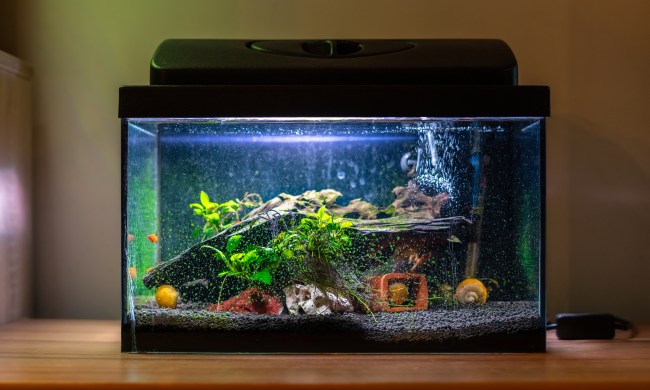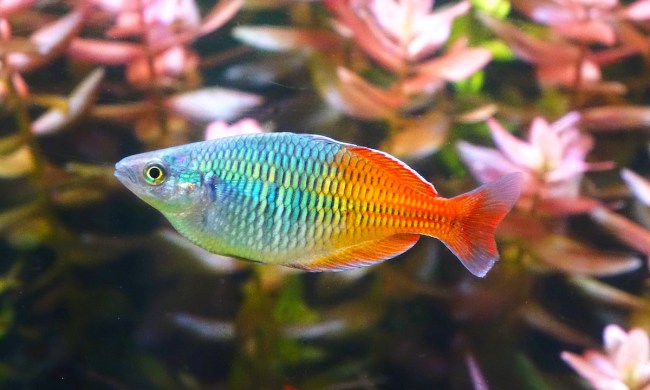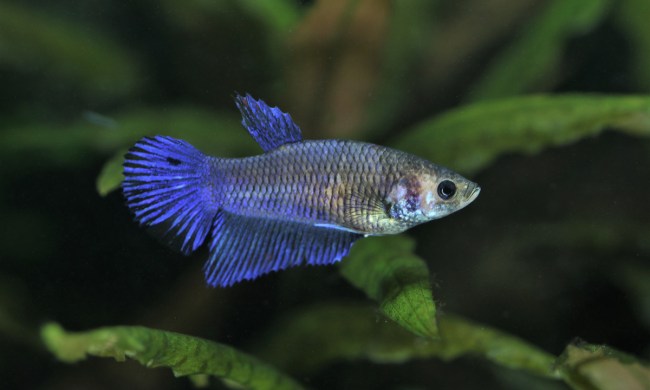Deep cleaning your prized aquarium sounds like a lot of work, but with a little bit of planning and the right tools you can be done in one hour or less. Keeping your fish in the ideal environment is the most important thing you can do to keep them healthy and happy. Let’s get started and learn how to quickly and thoroughly clean your aquarium.
Setting up for success
In order to finish quickly, having all the necessary items ready to go is essential. Unlike your weekly partial cleaning, this full water change requires the following:
- Gravel vacuum
- 20-gallon bucket
- Dish sponge
- Water quality test kit and conditioner
- Toothbrush
- Glass cleaner
- Paper towels
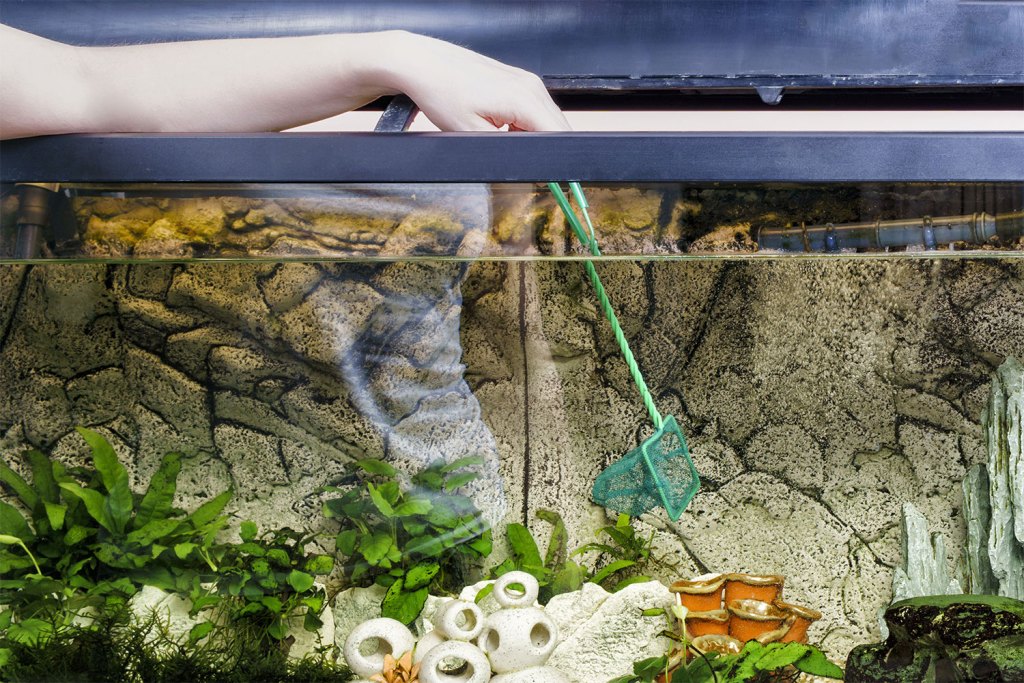
Turn off the equipment
Before we get started, a critical safety measure is to make sure all electronic equipment is off. Disconnect the filter, water heater, and any lights in your tank to prevent accidents. Heaters are particularly prone to break if they remain working out of the water. Once they are unplugged, rinse and scrub away any excess moss or algae growth.
Water removal and fish storage
Transporting your fish out of your aquarium during a deep cleaning might sound like a good idea, but the stress and risk are not worth it. Since you will be replacing about 60% of the water, your fish will have plenty of water to stay in the tank safely. Pump the water out carefully into the bucket with the aquarium siphon. Don’t vacuum the bottom gravel just yet. Wait until the very end so you can capture all the micro debris that will fall from cleaning.
The importance of testing
Test the water quality of your tank to ensure ideal conditions for your water pets. You are looking for balanced levels of chemicals so you don’t cause serious damage to your aquarium’s health.
As quick reference,these are the standard recommendations:
Ammonia – 0 ppm
Nitrites – 0 ppm
Nitrates – less than 40 ppm
Remove excess algae
In order to maintain a healthy biological balance, you need to control the growth of algae. Use the sponge to clean the inside walls of the tank as well as artificial plants. Scrub any decor or ornaments with a toothbrush and rinse well. This will ensure a clear view and make your aquarium look amazing while providing the perfect habitat.
Cleaning the gravel
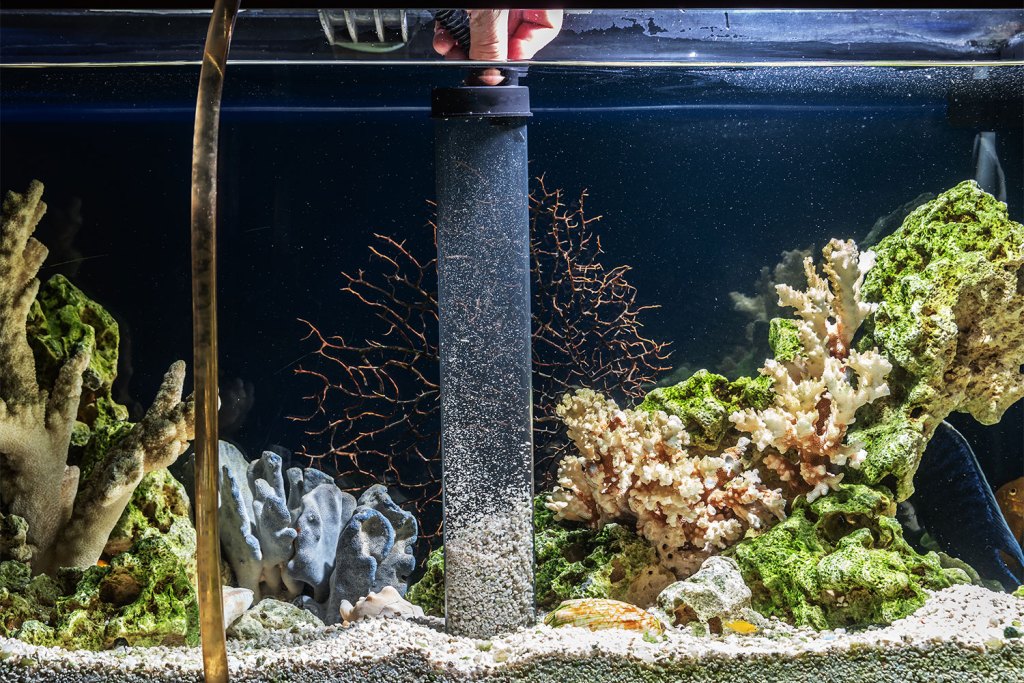
Once all walls and features have been cleaned, use the gravel vacuum to suck out dirt and gunk that hides at the bottom. In some cases, you might have to remove the gravel completely and rinse it thoroughly with fresh water, condition it, then place it back in the tank.
A big amount of biological waste, uneaten food, and other remains accumulate over time and can throw your aquarium out of balance. If you don’t own enough bottom feeders, you need to make sure you are cleaning the gravel every week.
Refilling the tank
This is the one step where your deep cleaning can go wrong. When you refill your aquarium, make sure you are pouring water gently into the tank. Double check that the temperature is at the right level and that it has been conditioned and treated. This will minimize the chances of your fish experiencing an environmental shock that can hurt them or put their lives at risk.
When should I deep clean my aquarium again?
It is best to do this type of cleaning about once a month, but the frequency depends on the size of your filter, aquarium capacity, number of fish, and how much decor is in your tank. As a rule of thumb, you should perform a weekly partial cleaning, with about 20% of the water replaced. Then every month, you go deep and take care of all the components and decorations.
